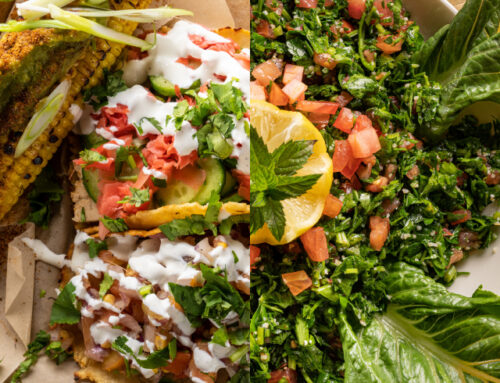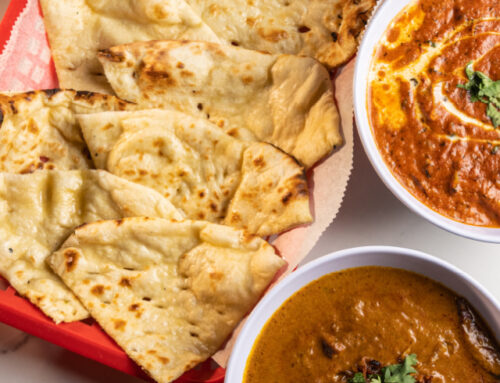Uncommon Goods: Unique Ingredients and How to Cook with Them
by Kathryn M. D'Imperio

Unless you’ve been through culinary school, you’ve likely seen unfamiliar ingredients on the menu when visiting a restaurant, especially fine dining establishments. But those special herbs, seasonings, vegetables, and other ingredients aren’t solely resolved for the mastery of executive chefs. Add a little adventure to your home cooking with some special ingredients and tips on preparation.
Here’s a list of interesting ingredients you can try in your own kitchen.
Ginger Root
What is it?
Ginger is a flowering, herbaceous perennial whose tuber, ginger root, is often used as a spice or for its medicinal benefits. Ginger spice is popular with tea and is commonly called for in a number of Indian and Asian recipes, especially as a flavorful addition to seafood, meat and even vegetarian cuisine. Ginger’s medicinal properties help with carsickness, indigestion, nausea and a host of other ailments.
How can I use it?
You may wish to peel, chop or grate the ginger root according to your chosen recipe. Look for recipes that include ginger root and you will find a variety of entrees, sides, and even desserts that include this ingredient. For your first time using ginger root, try grating a bit into a stir-fry dish, making curry, or adding it to a light and flaky fish recipe. Powdered dry ginger root is a useful spice in baking, typically for recipes like gingerbread, cookies, cakes and other treats.
Jicama
What is it?
Jicama (pronounced hee-cama) is a white root vegetable of Mexican origin, sometimes known as the Mexican yam or Mexican turnip.
How can I use it?
You may remember seeing jicama slaw or a similar item on the menu, but you can easily enjoy trying this versatile ingredient at home. When it comes to jicama, you can sauté it, roast it, add it to a salad, or make your own jicama fries or chips!
Lemon Curd
What is it?
This smooth, intensely flavorful spread is a popular flavoring for desserts. Its ingredients commonly include fruit juice, zest, sugar and beaten egg yolks, lightly cooked until thickened. Once cooled, the soft, smooth spread is ready for use.
How can I use it?
Lemon curd is commonly used for lemon meringue pie and can even be mixed with whipped cream to fill cream puffs. You might also want to try making lemon bars or simply add it as a topping to your favorite scones, breads, waffles or other baked goods.
Parsnips
What is it?
These cream-colored root vegetables resemble carrots in appearance, texture, and taste, although parsnips tend to be sweeter. Parsnips are also related to parsley.
How can I use it?
Like carrots, parsnips are a versatile vegetable in the kitchen. You can steam them, roast, boil, bake, puree, or even fry them. For a simple first attempt, try substituting parsnips for carrots in your favorite stews, soups, crock pot dishes, or as a side for your roast meats. Your family might also enjoy slicing them into thin rounds and frying them into chips.
Japanese 7 Spice
What is it?
Also known as “seven-flavor chili pepper,” Shichimi Togarashi is a spicy blend of seasonings that typically combines chili pepper, ground ginger, hemp seed, nori, roasted orange peel, sesame seed, and ground sansha.
How can I use it?
You can experiment with Japanese 7 Spice by adding it to soups, stews or noodle dishes. The bold flavor also works well with grilled meat and seafood.
Turmeric
What is it?
This bright yellow-orange powder comes from the same family as ginger and commonly flavors and colors Asian cuisine. Often found in curries and mustard, turmeric is popular in Indian and Pakistani cuisine as well. As a supplement, turmeric boasts a number of medicinal purposes, such as easing arthritis, heartburn and gastrointestinal issues, among others.
How can I use it?
Introduce turmeric in scrambled eggs, roasted vegetables, or throw a dash in your soup or rice dish. You can also look for specific curry recipes and others calling for turmeric.
Celeriac
What is it?
Also known as celery root, celeriac is an edible root that marries the flavor of celery with the starchy texture of a potato. If you like celery, chances are you will like celery root.
How can I use it?
Like many root vegetables, celeriac works well in casseroles, soups, stews and other savory dishes, as well as salads and stir-fry meals. You might also try adding some to your mashed potatoes for an easy first attempt. The green shoots and the root itself are edible.
Quinoa
What is it?
Quinoa (pronounced KEEN-wah) is a grain-like seed that is available on the shelves of every grocery store. The flavor is lightly nutty and quinoa is high in protein. Start with white quinoa before trying red or black as your first taste.
How can I use it?
Commonly made as a substitute to rice and pasta, quinoa cooks up quickly and works well with your favorite meats, stir-fry dishes, roasted or grilled veggies, or as a standalone side. Check for a recipe for your first time making it, but you’ll likely grow to love its versatility in your kitchen.
Capers
What is it?
Though they somewhat resemble peas, capers are actually pickled flower buds from Capparis spinosa, (the caper bush, which is also named Flinders rose). Capers bring a special zing to recipes with their salty, vinegary flavor.
How can I use it?
Use capers as a seasoning or a garnish in a variety of poultry, meat and seafood dishes, or even on salads. Try them with cold smoked salmon or in popular Italian dishes like chicken piccata.
Next time you feel like trying something new, start with a new ingredient and plan your menu from the inside out. Try a new recipe or spice up something already in your meal rotation. Visit a farm stand or your local farmer’s market this summer to find fresh flavors, or simply grab something new the next time you are at the grocery store. Otherwise you’ll never know what kind of wonderful culinary adventures you might be missing.
As seen in the Summer/Fall 2015 Issue
Click to Visit Our Advertisers




